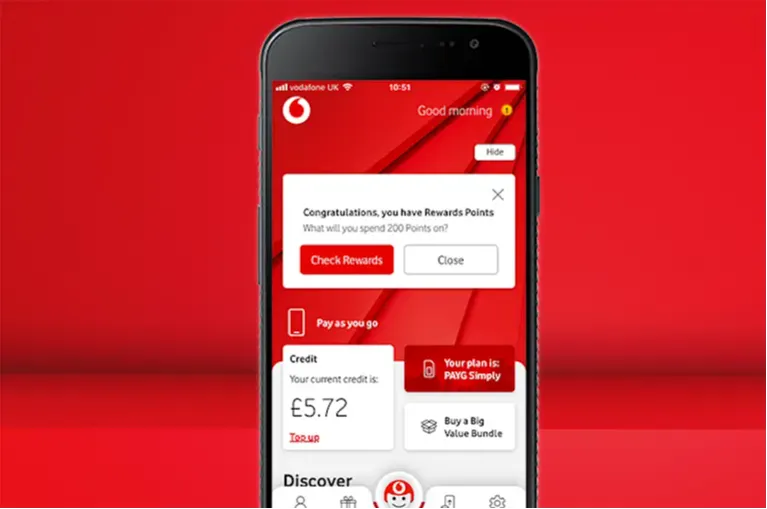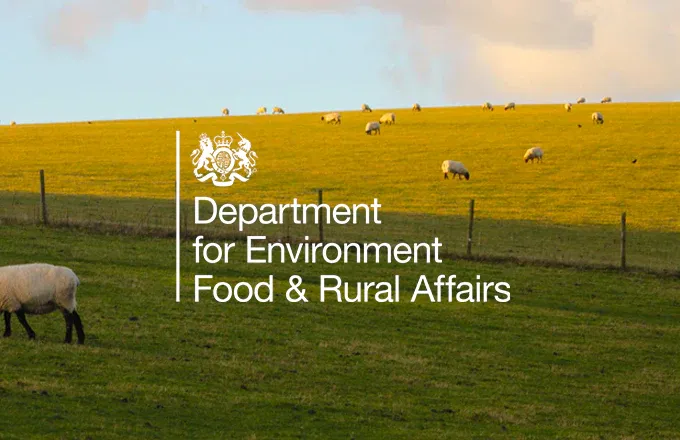Transformations That Shape Industries
I’ve had the privilege of working on some of the most high-profile and cutting-edge transformation programmes within some of the world’s largest and most complex organisations. From government departments to global retailers, financial services to telecommunications, each engagement has challenged me to bring clarity, alignment, and measurable outcomes where they mattered most.
These case studies showcase more than methods — they reveal how leaders and teams can break through silos, modernise ways of working, and build lasting capability. Each story reflects not just the frameworks applied, but the cultural shifts, leadership development, and real-world results that made transformation stick.


Home Office – Leadership Team Revamp
In 2025 I was invited to work with the Home Office senior leadership team, who were struggling with alignment, cohesion, and clarity of direction. Leaders were working in silos, focused only on immediate issues, and were disconnected from the teams on the ground. The impact was clear: delays in removing blockers, low morale, and a lack of shared strategy.
I began with a preparation workshop, clarifying roles and responsibilities and asking each leader to complete an effectiveness assessment and DISC personality test. This set the stage for a full away day where we analysed personality and team effectiveness, ran a futurespective workshop to look ahead, co-created an 18-month roadmap, and facilitated a session to establish a new leadership charter and ways of
working.
The change was immediate and tangible. Leaders gained a deeper understanding of each other’s strengths and styles, and communication across the team improved significantly. They left with a clear, shared roadmap that shifted focus from the day-to-day to a longer-term strategy, and energy levels were visibly higher. Team motivation scores improved, and staff felt their leaders were more approachable and collaborative.
As one leader reflected afterwards:
“This was one of the most impactful days we’ve ever had since I’ve been here.”

Tesco Plc – Obeya Implementation
In 2023 I joined Tesco’s online shopping division at the start of a major transformation. Product and technology teams were operating in silos, processes were outdated, and offshore delivery models added further complexity. A recent reorganisation into value streams had created a stronger structure, but the pace of delivery hadn’t slowed, leaving little space for leaders and teams to learn new ways of working.
I worked as part of a team of coaches to embed a structured framework that would help both teams and leaders align around shared outcomes. I introduced Obeya as a central mechanism for visibility and alignment, trained leaders and Product Owners, and facilitated workshops to improve problem solving. At value stream leadership level, I introduced the Three Amigos model — bringing product, technology, and delivery leaders together to collaborate more effectively. We also rolled out OKRs across value streams, held leadership away days, and coached teams hands-on to adopt these practices.
The results were clear. Communication improved, waste was reduced, and working practices across product and technology became more efficient. Leaders reported greater cohesion, and teams felt happier and more engaged. By embedding Obeya and structured alignment practices, Tesco gained the ability to move faster, collaborate better, and sustain improvements in agility across its value streams.

BT Plc – Customer Decisioning Alliance
At BT, I was invited to support a bold transformation of the Marketing Communications division. The senior leadership team had set an ambitious mission: to become fully data-driven and deliver personalised communications at scale across millions of customers. To succeed, they recognised that traditional structures and ways of working needed to give way to true business agility.
With more than 400 employees and 100 contractors, the initial approach was to restructure into Communications and Enablement functions and train every member of staff in Agile practices. However, progress was slow. Teams struggled with workload pressures, Scrum Masters were inexperienced, and the sheer scale of change left people feeling overwhelmed.
I worked alongside a team of coaches to provide support, but it became clear we needed to focus our energy. Together with the Head of Personalisation, we regrouped and designed a fresh approach: the Customer Decisioning Alliance (CDA). This new model brought leadership together, created smaller, dedicated squads with properly trained Scrum Masters and Product Owners, and introduced mechanisms such as a “Team of Teams” forum to surface and resolve systemic issues.
The turning point came during two off-site days. The first created buy-in and energy across more than 100 people, giving everyone the opportunity to reset, renew, and be heard. The second focused on quarterly planning, reinforcing that change was not only coming from the top but was now being led collectively. Leadership committed to reducing workloads by 50% for three months to give teams the space to embed new practices. Dedicated coaching and mentorship programmes were introduced for Scrum Masters and Product Owners.
The results were striking. Teams became empowered, decision-making improved, and cultural barriers started to fall away. The CDA moved from siloed, overstretched groups to a connected organisation capable of delivering personalised value at pace. Leaders had visibility and control, while teams had clarity and confidence. Most importantly, the framework we built together was scalable, enabling BT to extend the model across the rest of Marketing Communications and beyond.

Vodafone Plc - Start App Revamp
When Vodafone set out to launch its consumer Start App, they asked me to support a newly formed team that was spread across London and Pune. It was a big challenge: the team was brand new, split across two continents, and management still thought in terms of traditional project delivery. If the app was going to succeed, the team needed both a shared vision and a completely new way of working.
I began by bringing everyone together for a five-day bootcamp. We covered Agile training, ran measurable outcomes workshops, and created a clear vision that everyone — including management — could align to. That early investment was critical, as it gave us a baseline of agility, established success measures, and helped the team build relationships face-to-face before moving into delivery.
A few weeks later, I flew out to Pune to continue the coaching on-site. I helped the team address issues in their development cycle, facilitated workshops, and built relationships with local management. One of the most impactful changes was introducing a Lean Coffee event that allowed knowledge sharing across development teams. I also ran a two-day course for managers, helping them shift towards a servant leadership style so they could better support their teams.
Within three months, the Start App team had transformed. They went from disconnected specialists to a cross-functional unit that could break down work, deliver in increments, and focus on customer value. Most importantly, they started to think and act differently — working with a clearer sense of purpose and stronger collaboration across borders.

Vodafone Plc - Cloud & Network Infrastructure
I was invited to work with Vodafone’s Cloud and Network Infrastructure teams, who were under real pressure. Spread across Romania, Hungary, Italy, and the UK, the teams were juggling multiple projects, shifting deadlines, and conflicting stakeholder demands. Traditional project methods were creating strain and deadlines were being missed. It was clear they needed a more sustainable operating model.
I brought the teams together for the first time in a four-day bootcamp. We built a common foundation of Agile practices, set measurable outcomes, and worked on re-establishing trust within the group. From there, I helped the teams implement a Kanban framework, giving them a visual backlog and swim-lanes to manage competing projects. This simple shift gave both the teams and their stakeholders far greater visibility and clarity over priorities and progress.
Adoption wasn’t always easy — there were competing demands and long-standing habits to overcome. But the change laid down solid foundations. Teams began to work more transparently, gained confidence in how they engaged with stakeholders, and built healthier practices for managing workload. Perhaps the biggest lesson was the importance of introducing change gradually, especially when stakeholders already have firm delivery commitments. Even so, the engagement proved that with the right structures and coaching, meaningful change was possible even in high-pressure environments.

William Hill - Digital Transformation in Sports Betting
When I joined William Hill, the business was at a turning point. The betting shop model that had defined its 100-year history was in decline, and online and mobile sports betting were rapidly taking over. To compete in a global digital marketplace, William Hill needed a complete cultural and operational shift.
I was brought in as part of a wider transformation effort alongside other consultancies, but my focus was clear: to get hands-on with teams, coach them directly, and create momentum for change. I worked across multiple teams, delivering training, facilitating workshops, and embedding Agile practices into everyday delivery. I also helped set up Communities of Practice, which brought together disciplines like Quality Assurance and gave them a stronger, more empowered role across the organisation.
Within weeks, I could see the difference. Teams were starting to embrace new ways of working, energy levels were rising, and results were visible in both delivery pace and quality. What could have been a slow, difficult cultural change became a shift that people across the business wanted to be part of.

HMRC – £100m Data Migration Programme
At HMRC, I was asked to support a £100m data migration programme that was struggling with visibility, prioritisation, and flow. The appetite for agility was strong at the top, but legacy ways of working — heavily influenced by Prince II and waterfall thinking — were still slowing everything down.
I started by working with programme leaders to create clarity. Through a series of workshops, I mapped the entire portfolio onto a Kanban board, introduced WIP limits, and redesigned the prioritisation model. This gave leaders a real-time view of progress for the first time and the ability to make fast, well-informed decisions. It also stopped projects from “queue-jumping,” which had been a major pain point.
Alongside this, I worked directly with delivery teams, helping them to embed Agile frameworks and collaborate more effectively with their business stakeholders. The shift from a rigid waterfall mindset to a more fluid, value-driven approach was immediately noticeable. Leaders had the transparency they needed, and teams had a new sense of confidence and momentum.

Defra – Data Transformation Across 10 Agencies
Defra’s challenge was unique: running a large data transformation programme across ten different agencies, each with its own culture, ways of working, and very limited Agile expertise. Traditional governance was still dominant, and there were big gaps in both collaboration and delivery confidence.
I developed a strategy to build capability and alignment across all ten agencies. That began with classroom training to give teams and stakeholders a common baseline of Agile understanding. I also made it a priority to tackle misconceptions — such as the belief that Agile only applies to software. I showed research and documentation teams how they could adapt Agile principles to their work, which proved to be a breakthrough.
Over time, I saw attitudes change. Teams became more collaborative, individuals felt empowered to make decisions, and people began to see themselves as part of a bigger, connected whole. What started as a fragmented set of agencies became a more cohesive group, with a stronger culture of trust, empowerment, and delivery. The data transformation programme gained momentum and a much greater chance of long-term success.

